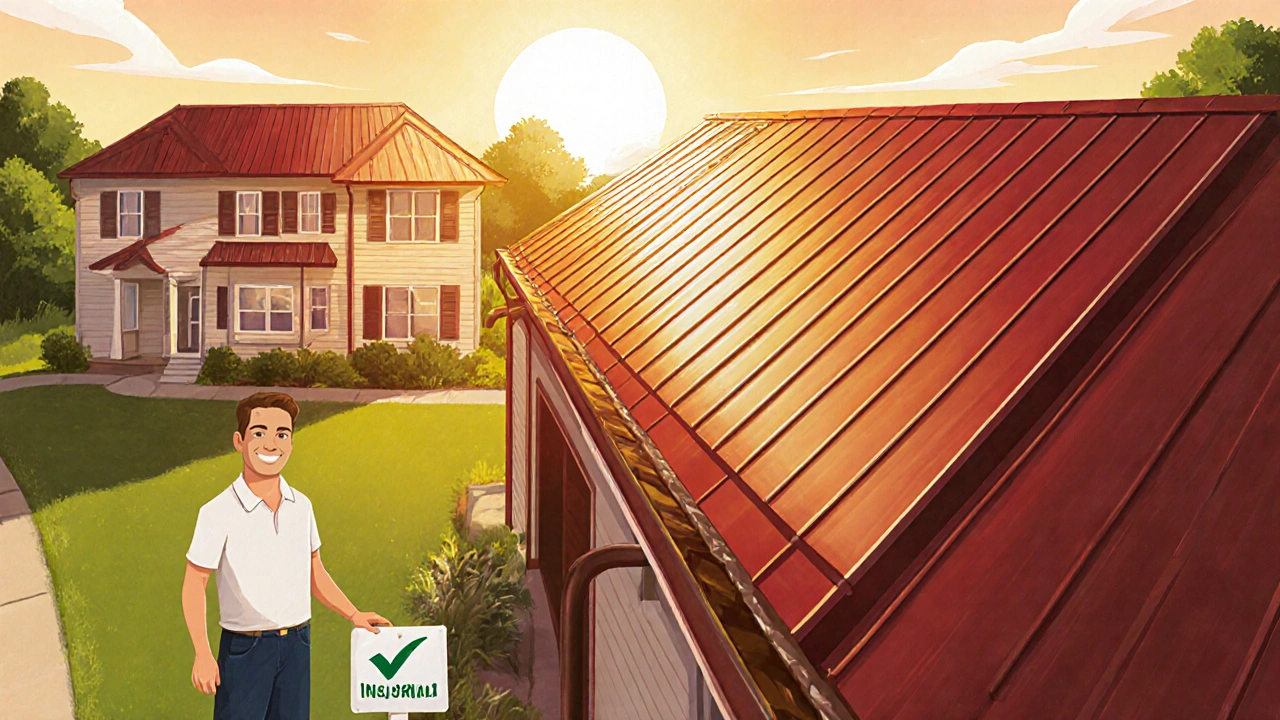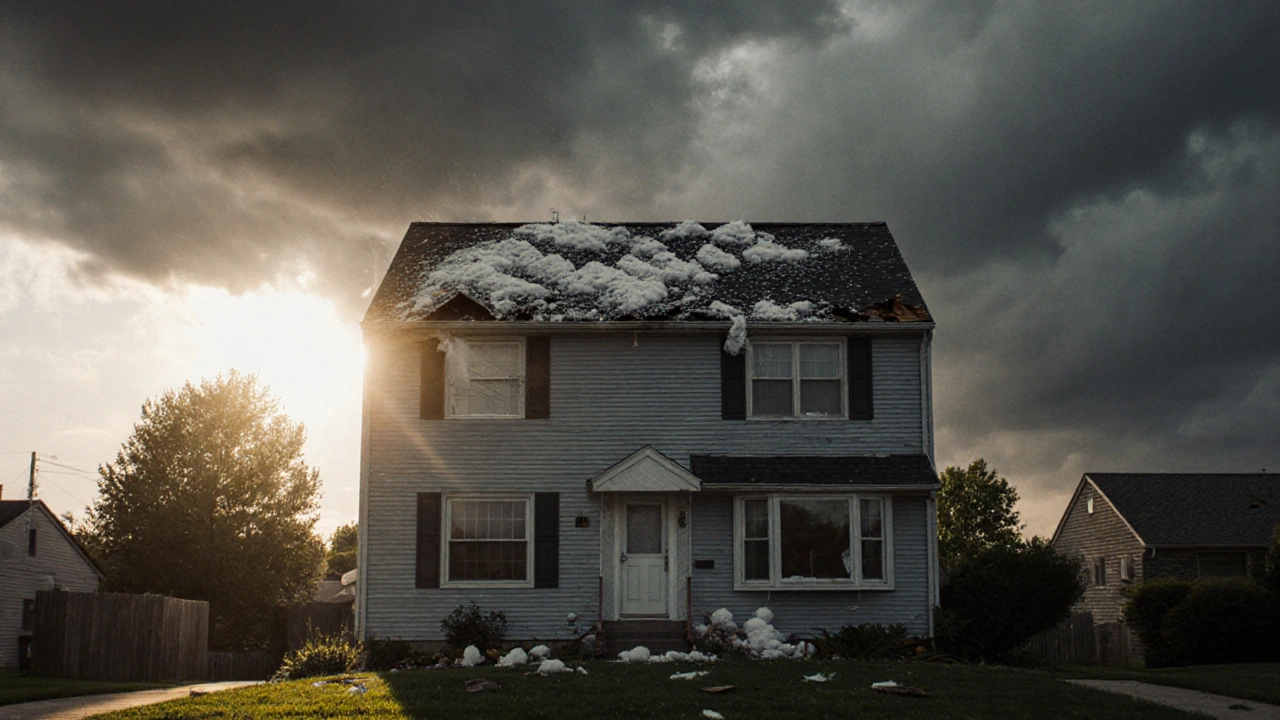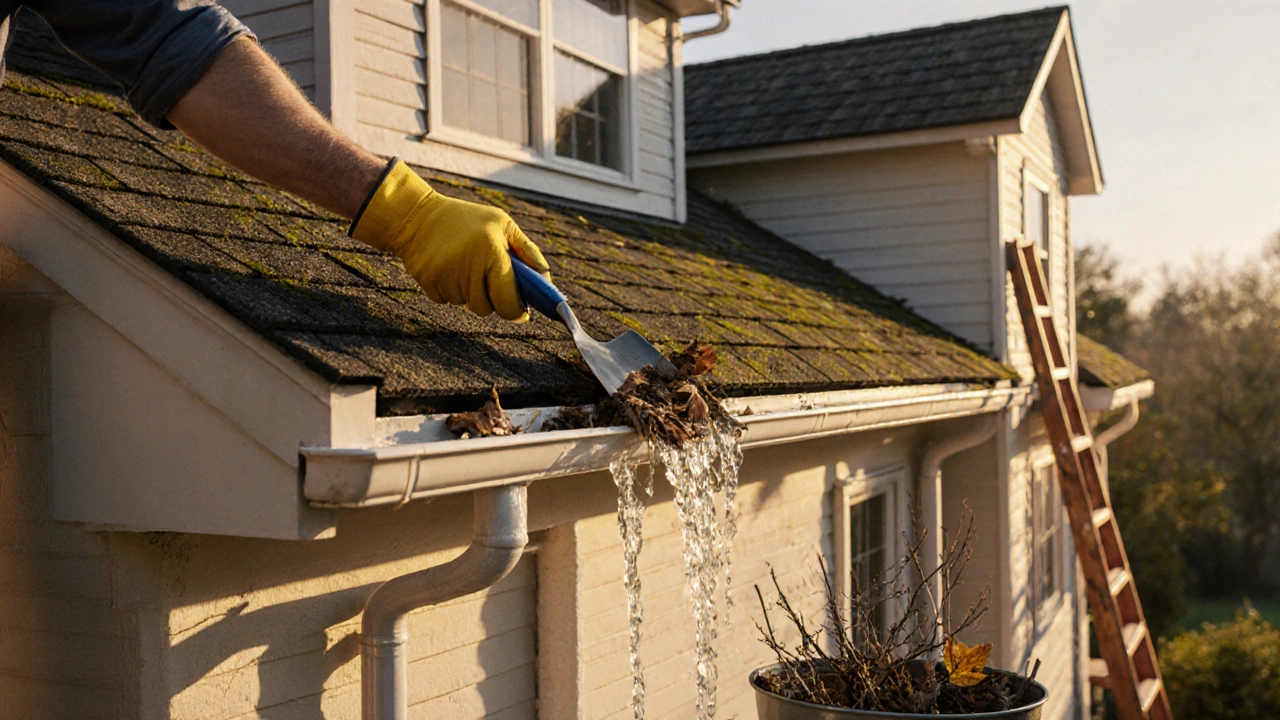Roof Repair Coverage Calculator
Calculate Your Roof Repair Costs
See how much you'll pay out-of-pocket for roof repairs based on your deductible and policy type.
Your Coverage Estimate
Out-of-pocket cost
$0
Insurance coverage
$0
Quick Takeaways
- Standard homeowners policies usually pay for roof repairs caused by covered perils such as wind, hail, or fire, after you pay the deductible.
- Damage from wear‑and‑tear, neglect, or mold is generally excluded.
- Knowing the difference between replacement cost and actual cash value can save you thousands.
- Document the damage, file the claim promptly, and work with the adjuster to avoid common denial reasons.
- Small upgrades to your roof before a storm can improve future claim outcomes.
When a storm knocks off shingles, homeowners insurance is a type of property insurance that protects your dwelling against covered perils such as wind, hail, and fire. It typically pays for structural repairs, including the roof, after you meet your policy's deductible. Homeowners often wonder whether that coverage extends to the pricey fix‑ups a damaged roof demands. Below we break down exactly when you’ll see a check, how to avoid surprise denials, and what steps to take for a smooth claim.
What a Typical Homeowners Policy Covers
A standard HO‑3 policy (the most common in North America) groups coverage into two buckets: dwelling coverage and personal property coverage. The dwelling portion protects the structure itself, which includes the roof, framing, and any built‑in fixtures. The policy outlines “insured perils events the insurer agrees to cover, such as windstorm, hail, fire, and lightning.” If your roof damage is tied to one of those perils, the insurer will generally foot the bill-minus the deductible.
When Roof Repairs Are Covered
Insurance steps in only for damage that is sudden, accidental, and directly linked to a covered peril. Typical scenarios that trigger a payout include:
- Windstorm or hail impact: Large hailstones or high‑velocity wind can crack shingles or blow off sections of the roof.
- Fire or lightning: A fire that spreads to the roof or a lightning strike that chars roofing material.
- Falling objects: A broken tree limb that crashes onto the roof during a storm.
- Vandalism or accidental damage: If your policy includes personal liability, a third‑party’s intentional act that damages your roof may be covered.
Conversely, insurers usually deny claims for:
- Gradual wear such as cracked tiles from age.
- Damage caused by poor maintenance (e.g., clogged gutters leading to water infiltration).
- Mold or rot that developed over months.
Types of Roof Damage Covered
Below are the most common damage types insurers will consider:
- Shingle tear or blow‑off: Visible gaps or missing pieces after a storm.
- Granule loss: Hail can strip protective granules, reducing lifespan.
- Flashings failure: Metal pieces around chimneys or vents that rust or bend after impact.
- Structural sag: Wind can weaken roof decking, causing noticeable dips.

How to File a Roof Repair Claim
Taking the right steps early can keep the process smooth and avoid delays.
- Document the damage take clear photos, video, and note the date and weather conditions. A thorough visual record is the foundation of any claim.
- Contact your insurer within the policy’s reporting window-usually 30 days. Mention the specific peril (e.g., “hail damage on 10/07/2025”).
- An adjuster the professional who inspects the loss and estimates the repair cost will schedule a visit. Be present, walk through the roof area, and answer questions. \n
- Obtain at least three written estimates from licensed roofing contractors. This helps you confirm the adjuster’s figure and can improve negotiation.
- Submit the required paperwork: claim form, damage photos, contractor estimates, and any receipts for temporary repairs (e.g., tarp).
- Review the insurance claim the official request for payment based on policy terms settlement offer. If it falls short, you can negotiate or appeal.
Common Reasons Claims Get Denied
Understanding denial triggers helps you pre‑empt them.
- Missing or insufficient documentation: No photos or vague descriptions.
- Improper maintenance records: If the insurer proves the roof was already in bad shape, they’ll label the loss “pre‑existing”.
- Policy exclusions: Some policies limit coverage for certain roof types (e.g., “flat roofs” or “asphalt shingles older than 20 years”).
- Deductible not met: If the repair cost is lower than your deductible, the insurer pays nothing.
Cost Factors and Your Deductible
The deductible the amount you pay out of pocket before the insurer steps in is a crucial piece of the puzzle. Choosing a higher deductible lowers your premium but raises your out‑of‑pocket expense. For example, a $1,500 deductible on a $10,000 roof repair means you’ll receive $8,500 from the insurer.
Other cost drivers include:
- Roof material: Metal, slate, and tile are more expensive to replace than asphalt shingles.
- Pitch and size: Steeper or larger roofs require more labor and safety equipment.
- Local building codes: Some municipalities demand upgraded underlayment or fire‑resistant sheathing, adding to costs.

Replacement Cost vs. Actual Cash Value
Most modern policies offer a replacement cost (RC) option, but some older plans still use actual cash value (ACV). The difference can be thousands of dollars.
| Aspect | Replacement Cost (RC) | Actual Cash Value (ACV) |
|---|---|---|
| What it covers | Cost to replace with new materials of similar quality | Cost to repair or replace minus depreciation |
| Typical payout | Full estimate (e.g., $12,000) | Estimate minus age factor (e.g., $9,500) |
| Best for | Newer roofs, higher‑value homes | Older homes with modest budgets |
If your policy lists replacement cost, you’ll likely get the full amount needed to install a brand‑new roof, provided the damage is covered. With ACV, the insurer subtracts depreciation based on the roof’s age, which can leave a sizable gap you’ll have to fund.
Tips to Maximize Your Roof Coverage
- Schedule a pre‑storm roof inspection and keep the report handy. It proves the roof was in good condition before the event.
- Upgrade to a higher‑quality roofing material that meets or exceeds local codes-insurers often view this favorably.
- Maintain clear gutters and downspouts. Document regular cleaning; it counters “poor maintenance” denial arguments.
- Consider adding a “perils endorsement” if you live in a high‑wind or hail‑prone area. This rider expands coverage for specific threats.
- Know your policy’s “grace period” for filing a claim. Waiting too long can breach the contract terms.
Frequently Asked Questions
Does my homeowners policy cover a roof leak that started after a storm?
If the leak can be traced directly to a covered peril-like wind‑blown tiles or hail damage-the policy will cover the repair after you meet the deductible. Hidden leaks that develop later from existing water intrusion are usually excluded.
What if my roof is older than 20 years?
Older roofs are still covered for sudden damage, but depreciation under an ACV policy can reduce the payout. Some insurers require a minimum roof age for replacement‑cost coverage, so check your policy language.
Can I get a claim after I’ve already patched the roof?
Yes, but you must keep the receipts for the temporary fix and still demonstrate the original covered loss. The adjuster will assess both the damage and the repair quality.
How does a roof replacement affect my premium?
A brand‑new roof can lower your premium because the risk of future claims drops. Many insurers offer a discount if you upgrade to impact‑resistant materials.
What’s the difference between a standard policy and an endorsement?
A standard HO‑3 policy includes basic perils. An endorsement is an add‑on that expands coverage-like a “windstorm rider” for coastal homes. Endorsements usually cost extra but can prevent gaps.
Understanding how homeowners insurance interacts with roof repairs empowers you to protect both your home and your wallet. By documenting damage, picking the right policy language, and following the claim steps above, you’ll be ready the next time a storm tries to take a bite out of your roof.



Paritosh Bhagat
October 14, 2025 AT 02:50When it comes to dealing with roof claims, the first thing you should consider is the policy’s language, because insurers love to hide loopholes in the fine print. A clear understanding of “covered perils” versus “maintenance issues” will keep you from irrationally blaming yourself later. It’s also vital to keep a meticulous record of any roof inspections, gutter cleanings, and repairs you perform before a storm hits. If you can prove the damage was sudden and accidental, the adjuster will have a hard time denying the claim. Remember, the deductible is your out‑of‑pocket contribution, so factor that into any repair estimate you receive.
Jawaharlal Thota
October 24, 2025 AT 09:13First, take a deep breath and acknowledge that navigating an insurance claim can feel overwhelming, but you’re not alone in this process. Begin by gathering every piece of documentation you have on your roof-photos, inspection reports, receipts for gutter cleaning, and even those little notes you made after the last rainstorm. Once you have a solid visual and paper trail, call your insurer promptly; most policies have a 30‑day reporting window, and filing early shows good faith. When the adjuster arrives, walk the entire roof with them, point out each damaged shingle, each dented flashing, and explain exactly how the weather event caused the problem. It helps to reference the specific peril listed in your policy, such as “hail damage on 10/07/2025,” because insurers love that kind of precision. After the inspection, request three detailed estimates from reputable contractors; having multiple numbers gives you leverage and protects you from lowball offers. Compare those estimates side by side, noting differences in material quality, labor rates, and any additional code‑upgrade requirements the local jurisdiction may impose. If the adjuster’s figure seems low, politely present the higher estimates and ask for a revised payout, citing the documented evidence you collected. Should the insurer still resist, remember you have the right to appeal; write a concise rebuttal letter, attach the extra estimates, and request a supervisor’s review. Throughout the entire journey, keep a dedicated folder-digital or physical-where you store every email, phone log, and receipt; this will become your ultimate weapon if a denial arises. Don’t forget to review whether your policy includes a “replacement cost” endorsement, because that can mean the difference between a full roof replacement and a partial, depreciated payout. If you’re on an older plan that only offers actual cash value, consider negotiating an endorsement upgrade during the next renewal period; many insurers are willing to add it for a modest premium increase. Lastly, after the claim is settled and the new roof is installed, inform your insurer of the completion; a fresh, code‑compliant roof often results in a lower premium at renewal, rewarding you for the proactive maintenance. By staying organized, assertive, and informed, you’ll turn a potentially stressful event into a manageable project, and you’ll emerge with a roof that’s ready to face the next storm with confidence. Remember, patience and persistence are your best allies in the insurance dance.
Andrew Nashaat
November 3, 2025 AT 14:36Honestly, the policy language is the real battleground, and if you skim it, you’re basically handing the insurer a victory on a silver platter; you’ve got to read every clause, every exception, every footnote, because the devil is in those tiny details. Also, don’t forget to double‑check whether your deductible applies per incident or annually, because that can totally change your out‑of‑pocket cost! Keep those receipts organized, label them clearly, and snap a quick photo of each before you tuck them away in a folder-trust me, the adjuster will ask for proof, and you’ll thank yourself later.
Gina Grub
November 13, 2025 AT 21:00Roof loss triggers a cascade of liability vectors, and the underwriting matrix instantly flags any deviation from the prescribed risk parameters. In layman’s terms, the insurer’s actuarial engine crunches the exposure data, then decides if the claim aligns with the policy’s perils clause. Failure to meet the actuarial thresholds equals a denial, plain and simple.
Richard H
November 24, 2025 AT 03:23American roofs are built to withstand anything.
Megan Blakeman
December 4, 2025 AT 09:46Great reminder to keep those photos handy!!! It really helps the adjuster see the damage right away :)
Akhil Bellam
December 14, 2025 AT 16:10Indeed, the underwriting matrix is nothing short of a high‑stakes chessboard, where each clause behaves like a knight, a bishop, or a rook, maneuvering through the labyrinth of risk assessment with flamboyant precision; the insurer, in this grand theatre, orchestrates a symphony of exclusions and endorsements, and the moment you overlook a single footnote, the entire composition collapses into a cacophony of denial, leaving the homeowner stranded without a safety net.